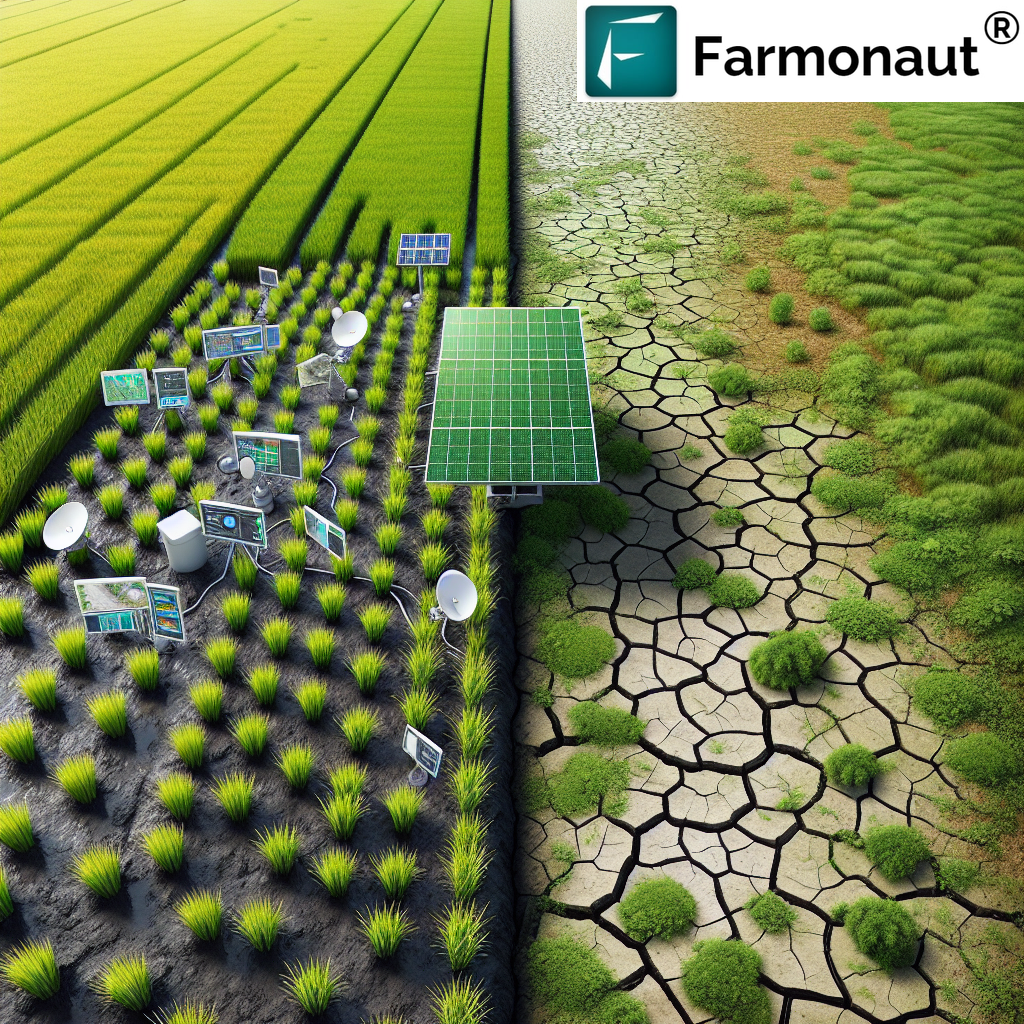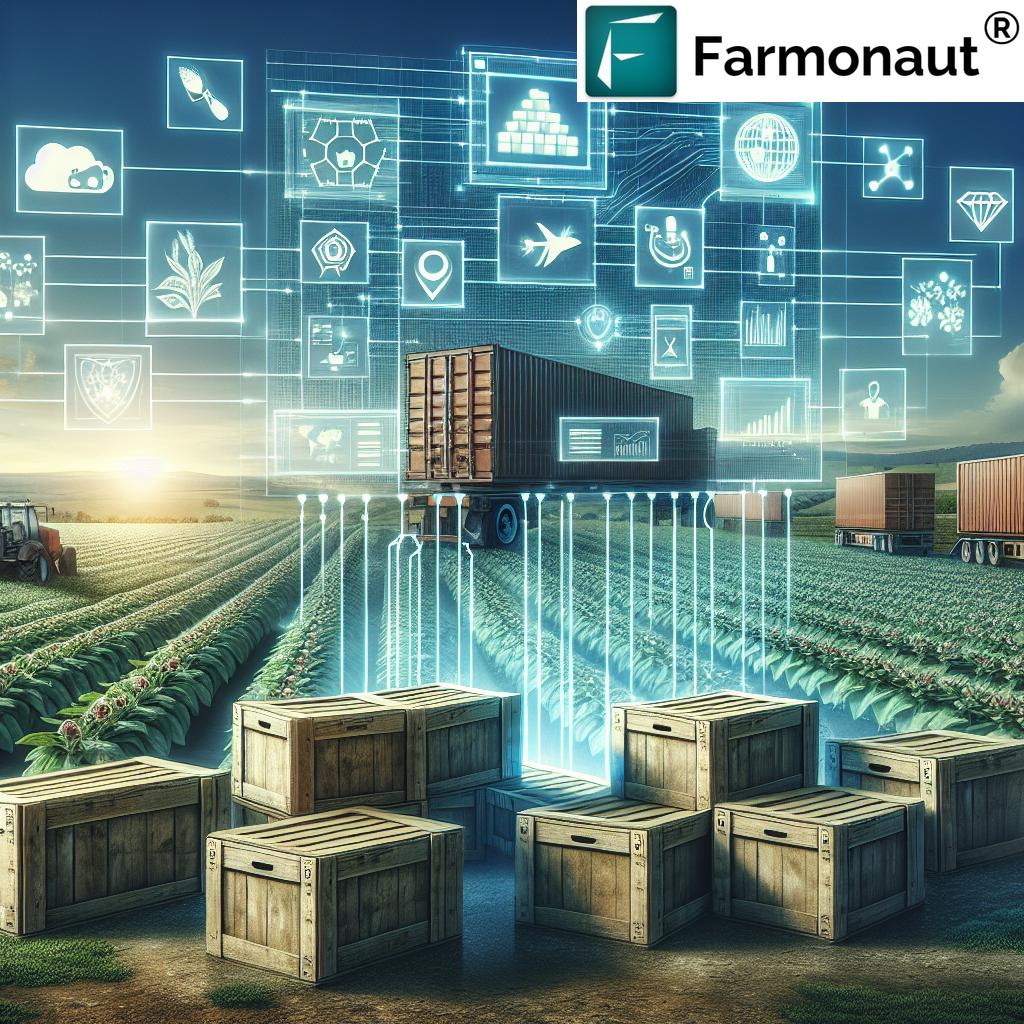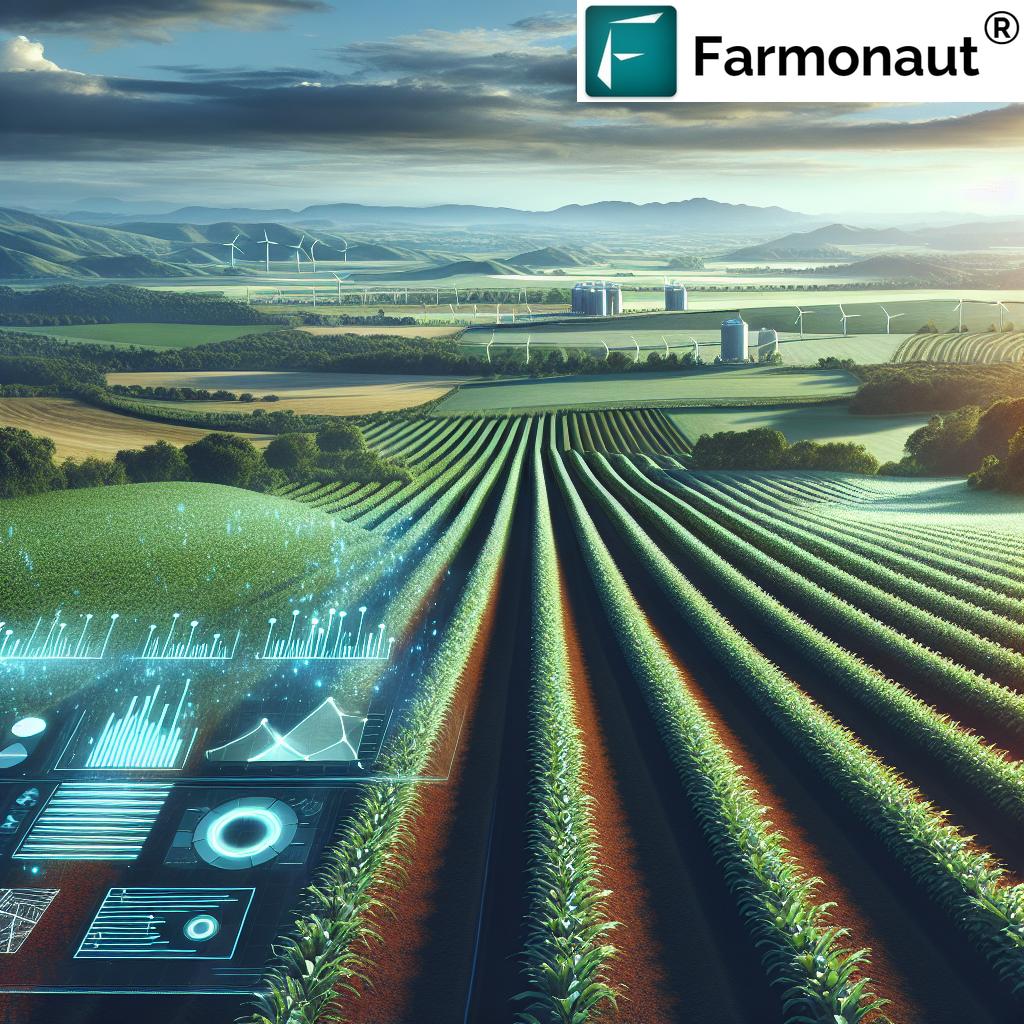5 Powerful Ways Agribusiness Strengthens Local Economy
“Modern agribusiness innovations can boost rural employment by up to 30%, strengthening local economies significantly.”
Introduction: The Cornerstone Role of Agribusiness in Local Economies
If we ask, which of the following contributes most to maintaining a strong local economy? The number of people available to be hired quickly, the nearness of basic businesses like farming and fishing, the ability of a bank to make loans to businesses, or the ability of congress to control international trade—the answer is evident in rural landscapes: the nearness of basic businesses like farming and fishing plays the most crucial role.
In 2025 and beyond, agribusiness stands as the foundation upon which thriving rural economies are built. Its direct contribution to employment, entrepreneurship, modern food production, and sustainable development is irreplaceable—especially in regions dependent on agriculture, forestry, and fisheries. The proximity of agricultural enterprises reduces transportation costs, keeps money circulating within the community, and sparks constant economic activity. These multiplier effects make agribusiness a cornerstone of local and global food security, rural vitality, and resilience against economic shocks.
By understanding, embracing, and innovating within the agribusiness sector, rural communities can turn multifaceted challenges—such as population outflow, climate change, and fluctuating commodity prices—into opportunities for growth and sustainable prosperity. Modern technologies and new approaches to farming, processing, and supply chain management are transforming the agricultural landscape.
This in-depth guide explores five powerful ways agribusiness strengthens the local economy—from the adoption of advanced technology that boosts yields and efficiency, to the value-added ripple effects of local processing, sustainable supply chains, and community-based cooperatives invigorating rural areas.
“Over 60% of rural businesses rely on agribusiness sectors for sustainable food production and economic growth.”
Key themes throughout this post include which of the following definitions best explains agribusiness, how modern agricultural innovation like precision farming and barbed wire technology have revolutionized rural economies, what factors matter most for maintaining a strong economy, and why the integration of supply chain, processing, and local services in places like Alabama is so influential for economic growth.
What Defines Agribusiness? Understanding Its Role in Alabama & Beyond
Let’s begin with the essential question: Which of the following defines agribusiness?
- It refers to the collective businesses involved in food production, from farming and forestry to processing, packaging, and distribution.
- It encompasses the entire supply chain that transforms raw agricultural products into consumable goods and brings them to market.
- Agribusiness highlights the integration of primary producers (farmers, fishers, foresters) and secondary industries such as manufacturers, suppliers, and finance services.
The definition of agribusiness specifically includes sectors such as:
- Crop production (grains, fruits, vegetables)
- Livestock farming (dairy, cattle, poultry, sheep)
- Forestry
- Poultry processing
- Bioenergy and byproduct utilization
For example, in Alabama, which of the following is not a sector of the agribusiness industry in Alabama? Notably, heavy manufacturing or purely service-based industries outside of agricultural processing do not fall under the agribusiness umbrella in the state. In other words, while agribusiness is a major economic driver involving farming, forestry, livestock, and processing, it doesn’t include unrelated manufacturing or non-agricultural services.
Key Takeaways:
- Agribusiness is both local and global, influencing how food and raw materials move from farms to tables to industries.
- Integration is vital: The seamless connection among production, processing, transportation, and retail is the backbone of a strong rural economy.
- Modern agribusiness leverages technology, finance, and human expertise to boost efficiency and innovation.
Why Agribusiness Strengthens Local Economies: Key Factors Explained
There are many factors that contribute to maintaining a strong local economy. However, a recurring question remains: Which of the following contributes most to maintaining a strong local economy? Let’s look at the options:
- The number of people available to be hired quickly
- The nearness of basic businesses like farming and fishing
- The ability of a bank to make loans to businesses
- The ability of congress to control international trade
Answer: The nearness of basic businesses like farming and fishing is the single most crucial factor for sustaining economic vitality in rural communities. This proximity:
- Reduces transportation costs and time
- Ensures employment is available close to home
- Keeps money circulating within the community
- Supports daily economic activity—making it a cornerstone of rural economic strength
Of course, the other factors (like banking loans, international trade, or available workforce) do contribute significantly. Yet, without the everyday immediacy and proximity of basic agricultural businesses, these support mechanisms have far less impact on economic sustainability in rural areas.
Why Proximity Matters:
Consider the following: when the distance between producers and consumers is minimized, the community retains greater value from each dollar spent. This circulation of money creates a multiplier effect and forms the basis of economic resilience.
The Role of Technology and Innovation (2025 Vision)
Agribusiness in 2025 is about more than just proximity. Technological innovation is reshaping everything from farm operations to resource management and supply chain transparency. For example:
- Precision agriculture enables farmers to maximize yields with fewer resources.
- Blockchain secures agricultural trade and makes food supply chains more transparent.
- AI-driven advisory tools provide real-time, localized recommendations, leveling the playing field for small and large farmers alike.
- Which technological innovation contributed to the improvement of farming in west texas and the closing of the open range? The answer is barbed wire, which started a revolution in fenced agriculture—opening the path for today’s digital agriculture and smart fencing solutions.
Below, we dive into the five most powerful ways agribusiness strengthens rural and local economies, supporting sustainable food production and community growth for 2025 and beyond.
5 Powerful Ways Agribusiness Strengthens the Local Economy
1. Adoption of Precision Agriculture & Technological Innovation
Modern agricultural innovation is driving rural transformation on a scale never seen before. Precision agriculture refers to the use of cutting-edge technology—such as satellite imaging, AI, drones, and IoT sensors—to monitor, analyze, and optimize farming operations at a granular level.
Imagine a scenario where every hectare of land is equipped with tailored advice for irrigation, fertilizer use, and pest control. Not only does this save resources and reduce environmental impact, but it also significantly boosts yields and farmer incomes.
- Satellite monitoring enables tracking of soil moisture, crop health, and weather risks, allowing farmers to act before disasters strike.
- Drones and AI-advisory systems minimize manual labor and make farming appealing to the next generation of skilled workers.
- Digital recordkeeping and data analysis improve access to banking, loans, and crop insurance solutions—vital for the financial security of rural businesses.
A key historical parallel: which technological innovation contributed to the improvement of farming in west Texas and the closing of the open range? The answer is barbed wire: a simple yet revolutionary invention that allowed for individualized land management, controlled grazing, and resolution of ownership disputes. Modern digital fencing tools are the contemporary equivalent, offering invisible boundaries, livestock monitoring, and resource protection.
Integration with real-time apps, such as those provided by Farmonaut’s satellite-based crop health monitoring and advisory system, means even smallholder farmers can harness the power of precision agriculture today. Farmonaut offers solutions via Android, iOS, web apps, and API access, making affordable smart farming accessible worldwide. Learn more about large-scale farm management and how it enhances both sustainability and profitability.
Benefits for the Local Economy:
- Bigger harvests and fewer losses mean higher incomes and more jobs.
- Youth are attracted to technologically advanced farming, addressing the need for attracting more skilled workers to agriculture—a key challenge identified for improving agriculture in the Middle East.
- Resilient agricultural production underpins affordable, secure food supplies at the local level.
2. Fostering Agri-Tech Startups & Local Entrepreneurship
Innovation thrives when new businesses (startups) are supported at the local level. The emergence of agritech startups has spurred a wave of high-impact entrepreneurship in rural areas, creating new opportunities and types of employment.
- Startups can focus on automated machinery, smart sensors, farm data analytics, logistics, robotics, and value-added food products.
- The introduction of carbon footprint monitoring solutions provides new business verticals supporting climate-smart, sustainable local economies.
- Entrepreneurs developing local fleet and resource management tools enable more efficient agricultural logistics and reduce operational costs in the region.
Why does this matter for economic strength? Because local startups are more invested in the community’s growth, prioritize local hiring, and keep profits within the area, fueling the community’s ongoing economic vitality.
Key Impact Areas:
- Jobs for youth and people with technical skills
- Access to finance through local banks supporting innovative agricultural ventures
- Business diversification—less dependence on commodity swings
- Catalyst for adopting new technologies: from AI-based advisory systems to satellite data API integration in farm management software
3. Developing Local Food Processing and Value-Addition Sectors
A pivotal element in which of the following contributes most to maintaining a strong local economy, the step between raw agricultural production and final market-ready products is local food processing and value addition. Whether it’s canning vegetables, cheese production, fruit drying, or packaging grains and poultry—these businesses:
- Create substantial local employment, especially for women and youth
- “Lock in” value that would otherwise leave the community through raw exports
- Give farmers higher returns compared to raw product sales alone
- Stimulate the local service economy—building, equipment maintenance, logistics, and retail
A value-added supply chain is the difference between simply exporting a raw commodity versus exporting a premium product with branding, traceability, and consumer trust. Solutions like blockchain-based product traceability enhance transparency and allow local brands to enter higher-value markets confidently.
Economic Advantages:
- Diversifies and stabilizes farmer incomes even during tough commodity cycles
- Encourages investment in modern food safety and packaging technologies
- Enables partnerships with local retailers and hotels, maximizing proximity and daily economic activity
4. Advancing Sustainable & Transparent Supply Chains
The modern consumer, business, and regulator all demand traceability, sustainability, and low carbon footprint from agri-food businesses. A local economy benefits when supply chains are short, transparent, and environmentally responsible.
- Blockchain-based systems ensure every member in the supply chain is accountable and can prove product origins—helping local farmers compete globally.
- Tools for measuring and reducing greenhouse emissions, such as Farmonaut’s carbon footprinting platform, provide both cost savings and premium market opportunities.
- Digital marketplaces and partnerships create new export avenues, increasing income for rural businesses.
Sustainable supply chain innovations ensure that economic growth does not come at the expense of environmental health—aligning with modern agricultural policies and international trade regulations for 2025 and beyond.
Community Benefits:
- Easier compliance with environmental policies and international trade requirements
- Access to premium, eco-friendly export markets
- Better public health outcomes through reduced use of harmful chemicals and improved food quality
5. Empowering Rural Communities Through Cooperatives
No discussion on maintaining a strong local economy in rural areas is complete without highlighting the role of community-based cooperatives. As collective organizations managed by and for the benefit of local farmers, fishers, and agriculture workers, cooperatives achieve what individual businesses cannot: collective bargaining, bulk purchase of inputs, access to larger markets, and risk sharing.
- Cooperatives organize workforce pools (“ready pool of workers”) to tackle seasonal labor needs efficiently
- Facilitate easier access to banking services, loans, and insurance thanks to group credibility
- Enable investment in shared advanced machinery, processing equipment, and infrastructure that might be unaffordable for individuals
- Strengthen community bonds, keep money circulating locally, and improve disaster resilience
This model fosters an environment where every member thrives, not just a few, and creates a powerful driving force for long-term economic strength and sustainability.
Comparative Impact Table: How the Five Ways Affect Local Economies
| Method / Innovation | Estimated Local Job Increase (%) | Estimated Revenue Boost (in Local Currency) | Impact on Food Security | Level of Technology Adoption |
|---|---|---|---|---|
| Precision Agriculture & Technology | 20-30% | High (Up to 40% growth) | High | Advanced |
| Agri-Tech Startups & Entrepreneurship | 10-15% | Moderate to High | Medium | Advanced |
| Local Food Processing & Value-Addition | 15-20% | High | High | Moderate |
| Sustainable & Transparent Supply Chains | 8-10% | Medium | High | Advanced |
| Community-Based Cooperatives | 12-18% | Moderate | Medium to High | Basic to Moderate |
How Farmonaut Empowers Local Agribusiness for 2025 & Beyond
We at Farmonaut are committed to making precision agriculture, traceability, and sustainability accessible and affordable for farms and agribusinesses globally. Our satellite-based solutions let farmers, cooperatives, and local businesses monitor crop health, receive AI-driven advisories, measure carbon footprints, and manage farm fleets—all from a simple mobile or web interface.
- Real-time Crop Monitoring: Our satellite data and advanced analytics guide irrigation, fertilization, and pest/disease management—improving yield and sustainability for rural economies. Try our Crop, Plantation, and Forest Advisory platform today.
- AI-based Farm Advisory: The Jeevn AI system provides custom, real-time recommendations, keeping your farm ahead of unpredictable weather or market swings.
- Blockchain Traceability: Enhance your brand and open new markets by certifying product origins and transparency throughout the supply chain—directly meeting consumer and regulatory demand.
- Resource, Fleet, and Carbon Management: Monitor carbon emissions in real-time and maximize efficiency for every tractor, truck, or irrigation pump with our Fleet Management solution.
- Easy Financing & Insurance: Our data-backed crop loan and insurance verification helps banks and insurance firms approve loans and claims faster—giving more farmers access to essential finance for growth.
- API and Developer Docs: Integrate our satellite and weather data seamlessly with your own agri-software and platforms. Visit our API page and developer documentation for more info.
Whether you’re a smallholder grower, large agribusiness, or government agency, Farmonaut’s solutions empower you to make data-driven decisions that boost productivity, sustainability, and profitability.
Frequently Asked Questions
- 1. Which of the following contributes most to maintaining a strong local economy?
- The nearness of basic businesses like farming and fishing is the most important factor. It reduces transportation costs, keeps money circulating in the community, provides local jobs, and directly sustains daily economic activity.
- 2. Which of the following defines agribusiness?
- Agribusiness refers to the collective businesses involved in food production, including farming, forestry, fisheries, processing, distribution, equipment supply, and finance supporting the entire value chain from producer to consumer.
- 3. Which technological innovation contributed to the improvement of farming in West Texas and the closing of the open range?
- Barbed wire revolutionized ranching by enabling controlled grazing and ending the open range. Today, digital fencing and smart monitoring innovations play similar roles in modern agriculture.
- 4. Which of the following must be addressed to improve agriculture in the Middle East? (Options: Attracting more skilled workers, improving the use of farm machinery, upgrading the use of fertilizers and herbicides, all of the above.)
- All of the above. Attracting skilled workers, enhancing farm machinery use and maintenance, and upgrading fertilizer/herbicide applications are all essential for improving agriculture in challenging regions like the Middle East.
- 5. Are heavy manufacturing and purely service sectors considered a part of the agribusiness industry in Alabama?
- No. Only sectors directly involved in agricultural production and processing fall within the agribusiness umbrella in Alabama.
- 6. How does precision agriculture strengthen the local economy?
- It increases productivity, minimizes resource waste, attracts skilled workers, and boosts crop yields—leading to higher incomes and more resilient rural communities.
Conclusion: Building a Resilient Rural Future
Maintaining a strong local economy in agriculture-dependent rural areas is a multifaceted challenge—but it is also the pathway to sustainable food production, employment, and growth. From barbed wire’s historic revolution in land use to today’s satellite-powered precision agriculture platforms, the integration of technology, entrepreneurship, and community-based models has consistently proven the key to economic resilience.
As we head into 2025 and beyond, embracing innovation across precision agriculture, supply chain transparency, agri-tech entrepreneurship, value-added processing, and cooperative structures is more essential than ever. The nearness of agribusiness enterprises remains the cornerstone—offering untold opportunities for rural vitality, global competitiveness, and sustainable development.
For those navigating the challenges of modern agriculture—whether in Alabama, the Middle East, or beyond—the future belongs to those who invest in smart, integrated, and sustainable agribusiness solutions.
Discover how Farmonaut’s affordable, advanced solutions can empower your farm, business, or cooperative.
Click the buttons below to get started!























